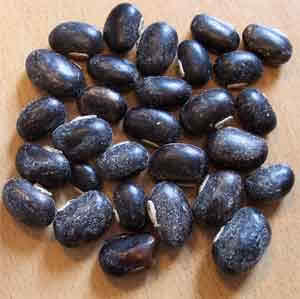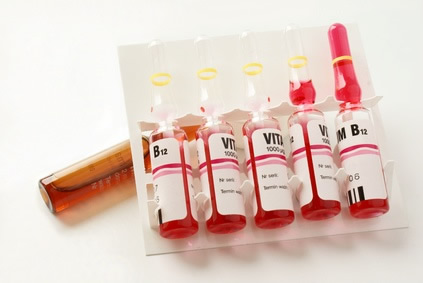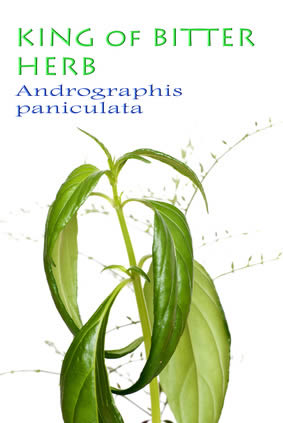Mucuna pruriens (cowhage), is a flowering vine in the legume family native to India. Its seeds include the alkaloids, mucunine, mucunadine, mucunadinine, and prurienidine, outside ß-sitosterol, lecithin, glutathione, gallic acid and vernolic acid. They posses a number of other bioactive substances, including tryptamine, steroids, alkylamines, cardenolides, coumarins and substances like zinc, iron magnesium and manganese.
Mucuna Benefits
This herb are used for the management of different free radical-mediated diseases, such as diabetes, male infertility, nervous disorders, atherosclerosis, and rheumatoid arthritis. Seeds of Cowhage possess hypoglycemic, lipid lowering, antioxidant, and neuroprotective activities. There are findings that seed powder of Mucuna pruriens helps in some way against stress, it enhances secretion of semen and it acts as a restorative and an invigorating tonic in diseases characterized by loss of sexual power. M. pruriens has been used in Ayurvedic remedy for diseases including parkinsonism. The activity of Mucuna pruriens is due to the fact that these seeds contain 3-4% levodopa, the standard therapy for Parkinson’s disease. Also, the bioactive alkaloids in M. pruriens have been found to stimulate testosterone secretion and boost the sperm count of animals.
Parkinson’s Disease
The substantia nigra is a part of the brain that contains a important level of dopamine, a neurotransmitter involved in body movement and balance. In Parkinson’s disease, the substantia nigra degeneration and nerve cells die. M. pruriens has been found to include L-DOPA, 40 mg/g of the herb. The L-Dopa content enhances when extracts are prepared. L-Dopa is an amino acid that converts into dopamine. L-dopa is changed to the chemical dopamine in the brain. This chemical significantly affects dopamine metabolism in the striatonigral tract.
 M. pruriens possesses significantly higher antiparkinson effect compared with levodopa (Levodopa is the standard administration used for therapy of parkinson’s symptoms) in the 6-hydroxydopamine lesioned rat model of Parkinson’s disease. Unlike synthetic levodopa therapy, M. pruriens cotyledon powder therapy significantly restored the endogenous levodopa, dopamine, serotonin and norepinephrine content in the substantia nigra. In an animal-based study reported in the September 2004 edition of the journal Phytotherapy Research, scientists, approved that administration of M. pruriens restored the levodopa, dopamine, serotonin and norepinephrine content in the brains of rats.
M. pruriens possesses significantly higher antiparkinson effect compared with levodopa (Levodopa is the standard administration used for therapy of parkinson’s symptoms) in the 6-hydroxydopamine lesioned rat model of Parkinson’s disease. Unlike synthetic levodopa therapy, M. pruriens cotyledon powder therapy significantly restored the endogenous levodopa, dopamine, serotonin and norepinephrine content in the substantia nigra. In an animal-based study reported in the September 2004 edition of the journal Phytotherapy Research, scientists, approved that administration of M. pruriens restored the levodopa, dopamine, serotonin and norepinephrine content in the brains of rats.
Some small-scale studies, M. pruriens was found to decrease symptoms in patients with parkinson’s disease. In a study, 15-30 g daily (4.86% Levodopa; 500 -1000 milligrams daily), was equally effective as normal Levodopa (200mg/50mg) therapy in treating symptoms of parkinson’s disease. In another clinical trial, the bean powder was given to 60 patients. There were statistically noteworthy reductions of symptoms in all study participants. A 2007 study by the “Department of Neurology at Scott & White Clinic” evidenced, anti-parkinson M. pruriens prevents levodopa-induced plasmid and genomic DNA damage.
Growth Hormone
L- Dopa includes natural secretagogues which may enhance the body’s ability to stimulate the release of growth hormone. Taking M. pruriens extract in l-dopa stimulates the secretion of Hgh (growth hormone) by the pituitary gland. Growth hormone encourages muscle mass, improves stamina and energy levels, improves a sense of well-being and has a useful affect on many other conditions of health.
Libido and Infertile
Elevated levels of dopamine can result in a more effective libido. As well as, dopamine can trigger the pituitary gland, which regulates various of hormones into producing higher proportion of testosterone. In animal experiments, M. pruriens stimulates libido and sexual behavior, and increases performance, while elevating serum testosterone levels.
A 2007 clinical trial by the departments of biochemistry, at “King George’s Medical University”, found that M. pruriens, elevated spermatogenesis and improved sperm motility. The total alkaloidal extract from the seeds produced an boost in the numbers of spermatozoa and the weights of the testes, seminal vesicles and prostate of treated rats. Therapy with M. pruriens induces secretion of the male hormone testosterone, luteinizing hormone, adrenaline, noradrenaline and dopamine in infertile male. M. pruriens supplement in infertile men is associated with enhanced sperm count and motility after taking 5 g of dried powder for three months; in addition improves various parameters of male semen indicative of increased fertility. The scientists also looked at the concentration of adrenalin and noradrenalin in the men’s blood. Both increased, which is to be expected.
Hyperprolactinemia
Prolactin is a hormone released by the pituitary gland; high amounts are considered to reason erection insufficiency in males. M. pruriens has been shown to prevent prolactin levels in vivo, vicariously through dopamine effect to suppress prolactin secretion. There is some findings that mucuna pruriens might be beneficial for treating hyperprolactinemia in men caused by the drug chlorpromazine. In approximately 10 to 40 percent cases of male infertility, excess prolactin secretion is responsible for low sperm production and poor libido. In a clinical trial, intake of the seeds in 56 male was able to develop erection and post-coital satisfaction after just 4 weeks of therapy.
Blood Sugar Levels
This herb may be found beneficial in treating patients suffering from diabetes. An ethanol-water extract of the seed, root, and fruit decreased blood sugar levels in rats by more than 30 percent.200 mg an ethanol extract provided a 40 percent decrease in blood glucose within 1 month, and a 51 percent decrease at 4 months.
Anti-Venom Agent
M. pruriens has been used as an anti-venom agent, particularly against the venom of a Echis carinatus (a snake). This venom affects the coagulative cascade, causing severe bleeding and haemorrhage. Researches on its effects against Echis carinatus, Bangarus, and Calloselasma have shown it has possible use in the prophylactic therapy of snakebites.
Mucuna Pruriens Side Effects
M. pruriens should not be used during pregnancy. The seed may cause birth defects. Mucuna may interact with some drugs. M. pruriens is contraindicated in combination with Monoamine Oxidase Inhibitors (MAOIs). Parkinson’s disease patients taking levodopa, dopamine antagonists or dopamine agonists should consult their doctor before taking the supplementation to prevent toxic psychosis. According to a article reported in “Lancet“, M. pruriens seed extract may cause toxic psychosis in schizophrenia patients.
 According to ayurvedic medicine, Emblica officinalis may be used as a rasayana to promote longevity, and has also been used to increase digestion, developed heart health, helps purify blood and stimulate hair growth.
According to ayurvedic medicine, Emblica officinalis may be used as a rasayana to promote longevity, and has also been used to increase digestion, developed heart health, helps purify blood and stimulate hair growth.  Homocysteine is a naturally synthesized by-product of methionine metabolism. Elevated levels of homocysteine are associated with a reduce in cognitive function and brain vascular complications. Researches shows that high levels of homocysteine may important enhance the risk of heart disease and stroke. Methylcobalamin may perform its neuroprotective activity through increased methylation, acceleration of nerve cell growth or its capability to promote wholesome homocysteine rates. Methyl B12 acts as a cofactor in the conversion of homocysteine to methionine. Methylcobalamin and 5-methyltetrahydrofolate are very important to the elimination of homocysteine. When treated with 1000 micrograms of methylcobalamin daily for 3 weeks, homocysteine levels decreased significantly.
Homocysteine is a naturally synthesized by-product of methionine metabolism. Elevated levels of homocysteine are associated with a reduce in cognitive function and brain vascular complications. Researches shows that high levels of homocysteine may important enhance the risk of heart disease and stroke. Methylcobalamin may perform its neuroprotective activity through increased methylation, acceleration of nerve cell growth or its capability to promote wholesome homocysteine rates. Methyl B12 acts as a cofactor in the conversion of homocysteine to methionine. Methylcobalamin and 5-methyltetrahydrofolate are very important to the elimination of homocysteine. When treated with 1000 micrograms of methylcobalamin daily for 3 weeks, homocysteine levels decreased significantly. A. paniculata has demonstrated significant results against viruses in clinical studies, including the capability to interfere with the way virus replicates and affects DNA. New researchs has dicated that extracts of A. paniculata may have the potential for interfering with the viability of the HIV (
A. paniculata has demonstrated significant results against viruses in clinical studies, including the capability to interfere with the way virus replicates and affects DNA. New researchs has dicated that extracts of A. paniculata may have the potential for interfering with the viability of the HIV ( The oldest researches were between 1941 and 1962. The findings of the various studies have showed the plant’s antispasmodic, hypotensive, cardiotonic and vasodilator effects. The first cancer research on graviola was conducted in 1976 by the “National Cancer Institute“. In plant screening, the stem and leaves of graviola showed active cytotoxicity against cancer cells. Their results reported that the Graviola were effective in destroying malignant cancer cells.
The oldest researches were between 1941 and 1962. The findings of the various studies have showed the plant’s antispasmodic, hypotensive, cardiotonic and vasodilator effects. The first cancer research on graviola was conducted in 1976 by the “National Cancer Institute“. In plant screening, the stem and leaves of graviola showed active cytotoxicity against cancer cells. Their results reported that the Graviola were effective in destroying malignant cancer cells.